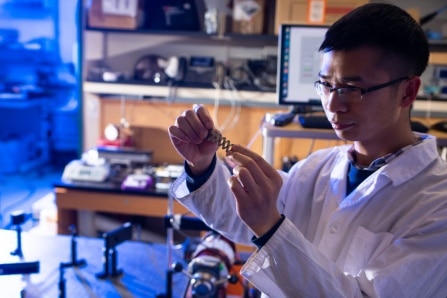A new study demonstrates how a magnetic substance may be used to monitor how long a rechargeable battery has left before it has to be recharged.
The experiment was conducted by Shenqiang Ren, a scientist and engineer from the University at Buffalo. Lithium ions flow from one side of the battery to the other as lithium-ion batteries charge and drain. Ren’s team designed a lithium-ion battery with a peculiar substance at one end: a compound whose magnetic property varies when lithium ions enter or exit it. According to Ren, this allows for the measurement of the battery’s charge level by measuring changes in the material’s magnetic.

“The main goal of this project was working on the magneto-ionics, which uses ions to control the magnetism of materials. As the lithium ions travel in or out of the material we are using, the material will change its magnetization. We can monitor the magnetism, and this enables us to indirectly monitor the lithium ions — the state of charge. We believe this is a new way to provide an accurate, fast, responsive sensing of state of charge,” says Ren.
The magneto-ionic substance developed by the researchers is formed of vanadium, chromium, and cyanide, together with an aqua ligand. The researchers discuss the properties of the compound that make it perfect for usage in rechargeable batteries, as well as the methods they used to measure the material’s changing magnetic in a rechargeable lithium-ion battery, in a study published in PNAS.
Researchers who contributed to the study are supported by the U.S. Department of Energy; the U.S. Army Research Office; and the New York State Energy Research and Development Authority.
Click here to access their paper.









